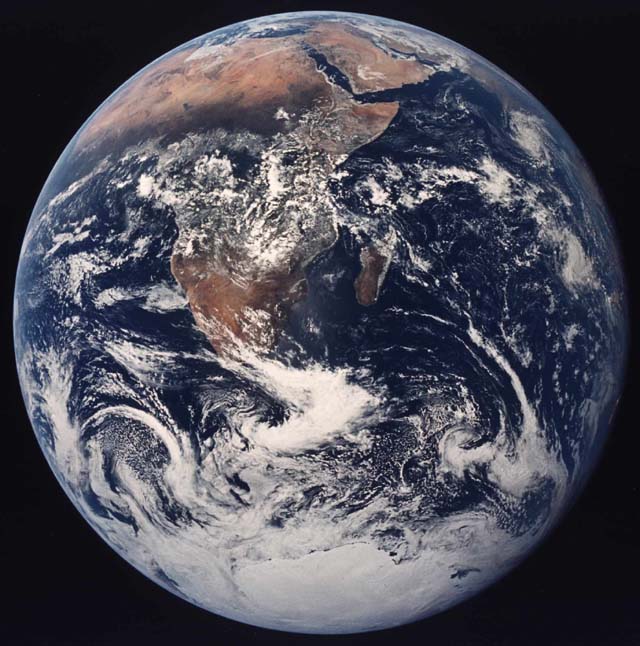 |
THE GAIA HYPOTHESIS* (Lovelock & Margulis) |
"...the physical and chemical condition of the surface of the Earth, of the atmosphere, and of the
oceans has been and is actively made fit and comfortable by the presence of life itself."
This is an interesting notion and may be at play at some level.
There are certain things we
know about the Sun which concern us when looking at
the Terresrtrial climate. As we noted in
earlier in the lecture, Venus apparently is much
different from the Earth today because it was
closer to the Earth (Venus is 0.7 A.U.
while the Earth is 1 A.U. from the Sun). This
corresponds to a difference in Solar heating (ignoring clouds)
of a factor of 2. According to
some modelers, even smaller increases in Solar heating
are important. This is disturbing
because the Sun gets brighter as it ages. At birth the
Sun was around 70 % of its current brightness
and by the time the Sun dies in 5.4 billion years,
it will be more than twice as bright as it
is currently.
Recall that the equilibrium temperature for the Earth is
currently below the freezing point of
water. In the past it should have been much colder. It appears, however,
the Earth was warmer in
the past (The Faint Young Sun Paradox)!
Huh? What is a possible explanation?
The Earth is currently affected by a Fast Carbon
Cycle
 where carbon dioxide is exchanged by our atmosphere, oceans, biomass
and crust. The cycle operates on timescale of few hundred thousand
years. The cycle we spoke of
earlier where carbon dioxide moves from the atmosphere to the lithosphere of
the Earth (CO2 combines with H2O in the atmosphere to
form carbonic acis that rains to the surface dissolves rock that releases that
are carried to the oceans by rivers--->forms calcium carbonate (in shellfish)
which dies and settle to the ocean floor forming rock (limestone and erivatives)---> rock ---> oceanic crust ---> releases gas through vulcanism when melted
at subduction zones). This cycle operates on timescales of 100-200 million
years, driven by plate tectonic motions.
where carbon dioxide is exchanged by our atmosphere, oceans, biomass
and crust. The cycle operates on timescale of few hundred thousand
years. The cycle we spoke of
earlier where carbon dioxide moves from the atmosphere to the lithosphere of
the Earth (CO2 combines with H2O in the atmosphere to
form carbonic acis that rains to the surface dissolves rock that releases that
are carried to the oceans by rivers--->forms calcium carbonate (in shellfish)
which dies and settle to the ocean floor forming rock (limestone and erivatives)---> rock ---> oceanic crust ---> releases gas through vulcanism when melted
at subduction zones). This cycle operates on timescales of 100-200 million
years, driven by plate tectonic motions.
*The Gaia Hypothesis, named after Gaea, Mother Earth,
a goddess of the early Greeks.


